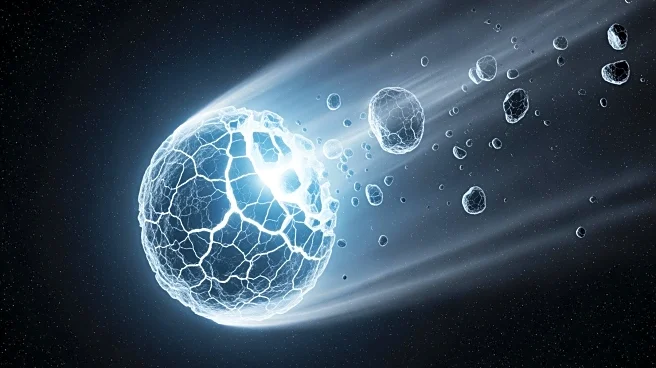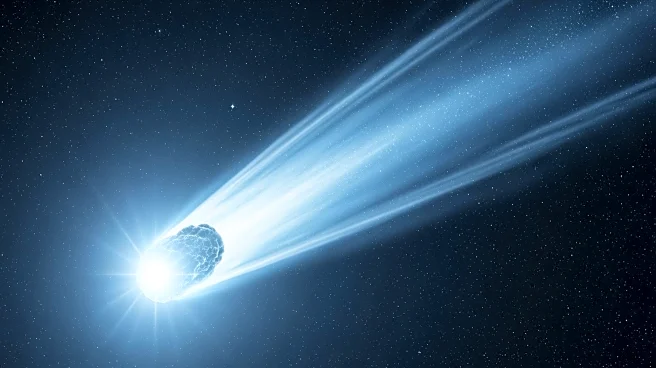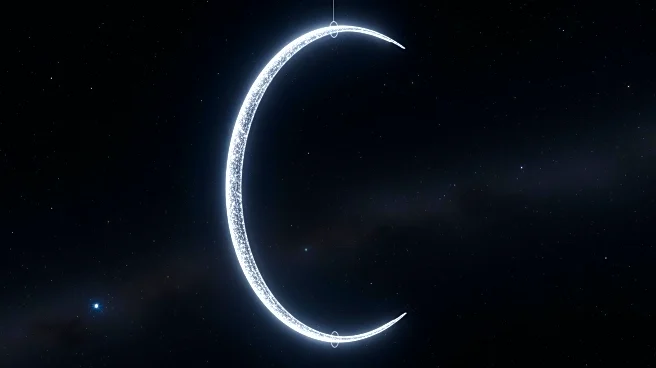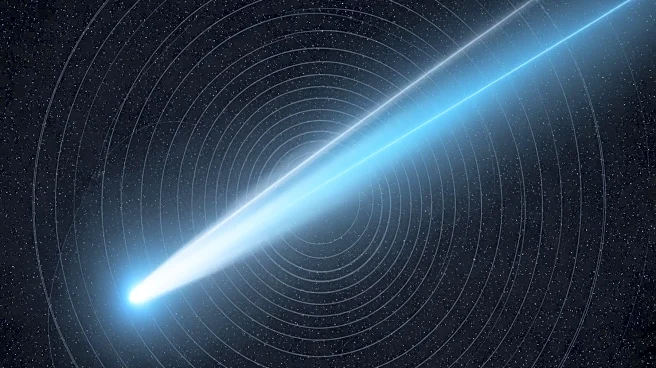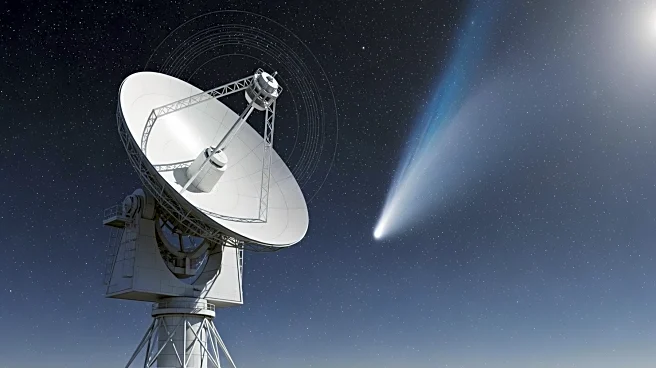What's Happening?
Comet C/2025 K1 (ATLAS) has been observed breaking into three large fragments following its close approach to the sun. Discovered in May 2025, the comet brightened as it neared the sun, forming a visible
coma and tail. The nucleus became unstable after passing near the sun on October 8, leading to its fragmentation. Observations by astronomers using the Copernicus telescope at Italy's Asiago Observatory revealed the separation of the fragments, providing a unique opportunity to study the comet's composition and behavior.
Why It's Important?
The fragmentation of Comet C/2025 K1 (ATLAS) offers scientists a chance to study pristine material from the solar system's formation, potentially revealing insights into the early solar system's composition and dynamics. Understanding the processes that lead to cometary fragmentation can improve models of comet behavior and inform predictions about other celestial bodies. The comet's breakup also highlights the challenges of predicting cometary stability and survival during close solar encounters, emphasizing the need for continued observation and research.
What's Next?
Astronomers will continue to monitor the fragments of Comet C/2025 K1 (ATLAS) as they approach Earth, providing further opportunities to study the comet's composition and behavior. The fragments are expected to pass closest to Earth on November 25, offering a chance for detailed observation using telescopes and other instruments. These observations may contribute to a better understanding of cometary dynamics and the conditions that lead to fragmentation.


